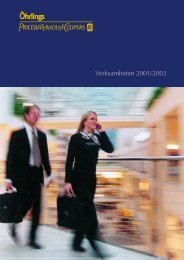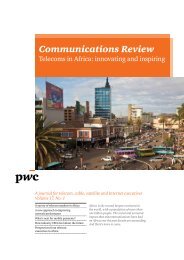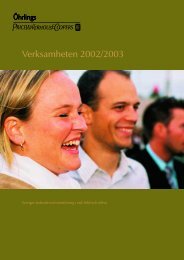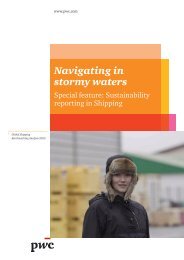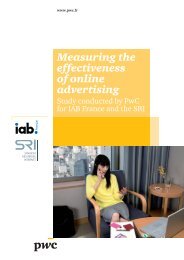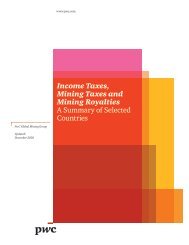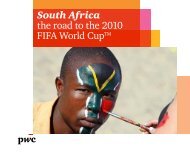From vision to decision Pharma 2020 - pwc
From vision to decision Pharma 2020 - pwc
From vision to decision Pharma 2020 - pwc
You also want an ePaper? Increase the reach of your titles
YUMPU automatically turns print PDFs into web optimized ePapers that Google loves.
Throwing out the rulebook<br />
So focusing on the masses isn’t proving<br />
any easier than focusing on the affluent<br />
elite who can pay for costly new<br />
medicines. But that doesn’t mean it’s<br />
impossible <strong>to</strong> make a profit in the growth<br />
markets. On the contrary, there’s much<br />
pharma can learn from the most<br />
innovative organisations. Consider the<br />
following examples.<br />
Designing products for<br />
people in the lower part<br />
of the income pyramid<br />
When Ratan Tata decided <strong>to</strong> develop a<br />
car for India’s urban masses, he started<br />
with a question: how <strong>to</strong> produce an<br />
affordable – and better – mode of<br />
transport for people who normally used<br />
mo<strong>to</strong>rbikes. The result was the $2,500<br />
Nano, a fuel-efficient vehicle that seats<br />
four passengers but comes without<br />
expensive frills. 102 GE Healthcare has<br />
applied the same approach <strong>to</strong> the<br />
medical equipment sec<strong>to</strong>r. Among other<br />
things, it’s launched two stripped-down<br />
MRI machines that sell for $700,000 <strong>to</strong><br />
$900,000, compared with a normal price<br />
of about $1.6 million. 103<br />
Using mass-market techniques<br />
<strong>to</strong> deliver complex services<br />
Dr Devi Shetty has perfected the<br />
science of high-volume heart surgery.<br />
At Narayana Hrudayalaya Hospital,<br />
in Bangalore, 42 surgeons – each<br />
specialising in a single procedure –<br />
perform some 600 operations a week.<br />
Dr Shetty charges about $1,500 per<br />
operation. Yet his profit margins are<br />
higher than those of the typical US<br />
hospital, and his quality as good. 104<br />
Eye-hospital chain Aravind has also<br />
used assembly-line techniques <strong>to</strong> deliver<br />
healthcare. It performs about 350,000<br />
operations a year and its operating<br />
rooms have at least two beds, so that<br />
surgeons can swivel from one patient<br />
<strong>to</strong> the next. 105<br />
Pooling resources for<br />
different purposes<br />
When Simon Berry, founder of British<br />
charity Colalife, wanted <strong>to</strong> distribute<br />
anti-diarrhoea products in the<br />
developing world, he had a brainwave:<br />
Coke gets everywhere aid doesn’t, so<br />
why not pack the crates with medicines?<br />
Colalife designed a wedge-shaped<br />
container that fits between rows of Coke<br />
bottles and is now piggybacking on<br />
Coca-Cola’s distribution network. 106<br />
The same concept can be used with other<br />
products and markets. Indeed, we<br />
anticipate that, by <strong>2020</strong>, the biggest<br />
pharma companies will be pooling<br />
resources with health insurers and<br />
community care providers in the growth<br />
markets <strong>to</strong> stimulate demand for their<br />
products. They’ll also be participating in<br />
cross-industry transportation networks<br />
<strong>to</strong> reduce their distribution costs.<br />
There’s much pharma can<br />
learn from organisations<br />
that have mastered the<br />
art of serving the lower<br />
part of the income<br />
pyramid profitably<br />
22 <strong>Pharma</strong> <strong>2020</strong>




